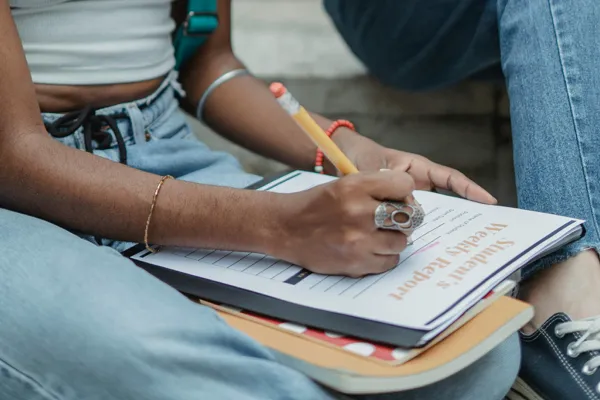Strengths-Based Solutions for Every Industry
Our strengths-based approach is designed to adapt across industries, helping individuals and organizations foster resilience, promote well-being, and achieve sustainable success.

Who We Serve

Corporate / Small Business
Empower teams to collaborate, innovate, and thrive by leveraging strengths to enhance performance and foster a positive workplace culture.

Non-Profit / Community Organizations
Align team strengths with mission-driven objectives, improving collaboration, engagement, and long-term impact for the communities you serve.

Educational Organizations
Equip educators and students with the tools they need to thrive by fostering resilience, well-being, and growth in learning environments.

Individuals
Equip educators and students with the tools they need to thrive by fostering resilience, well-being, and growth in learning environments.
Why Our Approach Works Across Industries
Our approach works across diverse industries by fostering adaptability, resilience, and innovation through a personalized strengths-based model. By building psychological safety and leveraging individual and team strengths, we help organizations navigate uncertainty, improve performance, and sustain long-term success.
Adaptability and Resilience
The framework equips organizations with practical strategies to embrace change and overcome challenges through intentional growth and flexibility.
Tailored to Unique Needs
The use of individualized FLQ-A assessments enables targeted growth strategies, allowing the model to align with different organizational goals and environments.
Sustainable Performance
Strengths-based practices foster sustainable growth by embedding well-being, collaboration, and innovation into the organizational culture.
Psychological Safety for Innovation
By creating environments where employees feel safe and valued, the framework encourages innovation and idea-sharing, essential for success across fast-evolving industries.

Holistic Well-Being
Organizations benefit from improved well-being and reduced absenteeism, with strengths-based development lowering burnout and creating thriving, engaged teams.

Let's Build Strengths and Resilience Across Your Organization
Ready to create a thriving, adaptable workplace?
Schedule a consultation and explore how our strengths-based solutions can help your organization flourish.
What Our Partners
Are Saying
The people we serve say it best.
From business leaders to school administrators to nonprofit directors, our clients are experiencing the power of flourishing—personally and organizationally.
Here’s what they’ve shared:
Moona Cooley
CEO, Cool Family Solutions

Dr Wayne Hammond’s Flourishing Life Questionnaire has been instrumental in measuring the impact of our program. It has provided the participants in Cool Family Solutions 10-week Families Helping Families program to assess their individual growth areas and strengths. This strength-based approach provides valuable insights to empower families not only to cope with challenges but to thrive with confidence, adaptability, and a proactive mindset.
Tina Clem
Strategy, Evaluation & Impact Specialist,
Calgary Youth Justice Society

"In The Lead has made a difference in my life by guiding me to make better decisions and choices based on my strengths. I got to learn about some strengths I didn’t even know I had. This has made me a more open minded person and I have developed a growth- mindset."
- Youth Participant
It represents everything you believe in and have worked so hard to create and put out in the world.
Stay Connected. Keep Growing.
Flourishing is a journey—and we’re here to walk it with you.
Join our newsletter for the latest insights, tools, and stories to help you, your team, and your organization thrive. You'll also get access to new blog posts exploring emotional health, leadership, personal growth, and purpose-driven culture.

Building a Learning Culture in the Classroom
What is a Learning Culture in the Classroom?
A learning culture in the classroom is an environment where both teachers and students actively engage in acquiring and sharing knowledge. It promotes curiosity, encourages questions, and prioritizes growth. This type of classroom doesn’t just focus on academic success but fosters a mindset that values continuous learning, embracing challenges, and turning mistakes into learning opportunities.
In such a culture, students feel safe to express their ideas, take risks, and learn from failure without fear of judgment. The teacher, as the facilitator, promotes openness, reflection, and collaboration, nurturing each student’s natural curiosity.
What Does a Learning Culture Look Like?
Imagine walking into a classroom where students are eager to learn from each other, not just the teacher. The room buzzes with conversations where students challenge each other's ideas, respectfully disagree, and explore new perspectives. Students actively seek feedback to improve their work, and the teacher encourages self-reflection after each project. Mistakes are seen as valuable learning opportunities, not failures.
This classroom fosters:
Openness and Trust: Students feel safe sharing their thoughts and learning from one another.
Collaborative Learning: Group activities and discussions are central, emphasizing learning from different viewpoints.
Growth Mindset: Both successes and setbacks are celebrated as part of the learning journey.
Continual Reflection: Students and teachers alike reflect on their progress, encouraging ongoing development.
Engaged Participation: Learning is student-driven, with curiosity leading the way.
5 Steps to Creating a Learning Culture in the Classroom
To help foster this enriching learning environment, here are five actionable steps you can take:
1) Encourage a Growth Mindset
Help students understand that learning is a process, and that intelligence and abilities can grow with effort. Emphasize that challenges are opportunities to develop new skills. Celebrate both small and large successes, as well as the lessons learned from failure.
❇️ Action Tip: Use language that promotes growth, such as "You’re not there yet," and model learning from your own mistakes.
2) Create Psychological Safety
Build an environment where students feel safe to ask questions, voice their thoughts, and make mistakes without fear of embarrassment. Trust and openness allow for deeper learning and creativity.
❇️ Action Tip: Regularly engage students in discussions where they share what they’ve learned from challenges and mistakes. Make it clear that learning from failure is valued.
3) Foster Collaboration and Peer Learning
Learning together promotes diverse thinking and helps students learn from one another. Encourage teamwork and open dialogues, where students actively listen and build on each other’s ideas.
❇️ Action Tip: Incorporate group projects and peer review sessions where students give and receive constructive feedback.
4) Provide Meaningful Feedback
Shift from one-time assessments to ongoing feedback that focuses on growth. Feedback should help students understand their strengths and areas for improvement, motivating them to keep improving.
❇️ Action Tip: Incorporate regular, formative feedback sessions. Ask students to reflect on the feedback and set goals for their next steps.
5) Integrate Reflection as Part of Learning
Encourage students to reflect on their learning experiences regularly. Reflection helps deepen understanding and keeps the focus on progress rather than simply outcomes.
❇️ Action Tip: At the end of each lesson or project, have students reflect on what they’ve learned, how they approached challenges, and what they would do differently next time.
Final Thoughts
By implementing these five steps, you can cultivate a classroom culture where students feel empowered to take ownership of their learning. A strong learning culture will not only improve academic outcomes but will also help develop resilient, agile learners who are better equipped for the challenges of tomorrow.

© 2025 Flourishing Life Technologies, Inc.
All Rights Reserved
